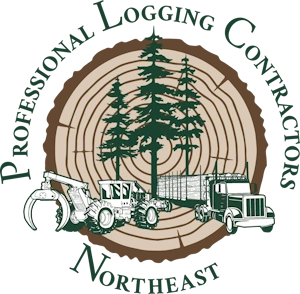Safety Alert: Load Binder Handle Strikes Truck Driver’s Forehead
BACKGROUND: Near the end of a cold, winter day in the South, a truck driver had nearly completed moving the last piece of equipment for the day to a new tract/location. He began to unbind the machine—a chain flail delimber—on the trailer.
PERSONAL CHARACTERISTICS: The 28-year-old truck driver had 10 years of experience and had been working in his current job for four years. He was noted as a responsible worker who wore personal protective equipment, including a hardhat, steel-toed boots, and gloves in this situation. The driver regularly moved equipment.
UNSAFE ACTS AND CONDITIONS: The driver followed the usual procedure for unbinding the machine. He released the  tension from the ratcheting chain binders on one side and then moved around to the opposite side to release the remaining binders. The trailer was leaning slightly away from the side that was still bound by chains and binders. This kept tension on the chains. Additionally, the binders on the uphill side were “lever” type of load binders, rather than ratcheting types. He began to release one binder handle.
tension from the ratcheting chain binders on one side and then moved around to the opposite side to release the remaining binders. The trailer was leaning slightly away from the side that was still bound by chains and binders. This kept tension on the chains. Additionally, the binders on the uphill side were “lever” type of load binders, rather than ratcheting types. He began to release one binder handle.
ACCIDENT: Although the accident was unwitnessed, evidence suggests that the load binder handle snapped quickly backward and struck the truck driver’s forehead with a glancing blow as he released the tension. The logging business owner-operator found the driver lying face down on the ground, holding his head. (The driver later could not recall what had struck him.)
INJURY: The driver noticed blood coming from his lacerated forehead, and he temporarily lost consciousness. The owner-operator called 911, but the dispatcher could not understand the directions to the logging job, so the owner transported the driver to the hospital himself. Fortunately, the injuries proved to be mostly superficial, and the employee was treated with stitches and released on the same day.
RECOMMENDATIONS FOR CORRECTION:
- Load binding systems store energy that can release suddenly. Release the binder handle and load with extreme care. Make sure all personnel are clear.
- Use an open palm under the handle and push up to release the tension, and lean back and away from the arc of the binder handle in the event of “snap-back.”
- Wear appropriate PPE.
- A ratchet-type binder provides a better mechanical advantage compared with a lever-style binder and can release the tension in a gradual, safer manner.
- Wherever feasible, park the tractor-trailer carrying the piece of equipment on level ground to improve safety during unloading or unbinding.
- Before moving to a new tract, record specific directions or locations/GPS coordinates, and keep them readily available in the event of an emergency. Not everyone can give detailed, coherent directions to emergency personnel in a crisis situation—it’s better to have the information prepared and written in advance.
Reviewed by:
Rick Meyer
Appalachian/Southwide Region Manager
See this alert and more under the National Timber Harvesting and Transportation Foundation link on our SafetyFirst Page
